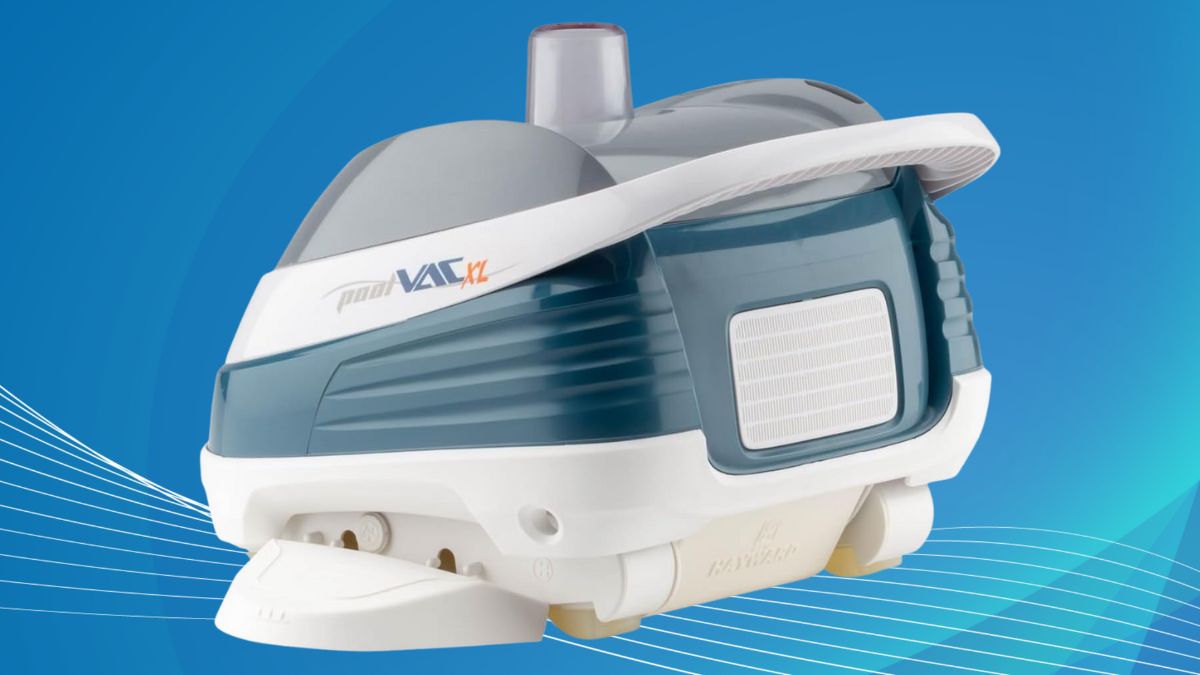Keeping a pool clean is a chore that quickly eats up time—especially when you’re skimming, brushing, and vacuuming manually several times a week.
That’s where suction-side automatic cleaners like the Hayward PoolVac XL step in, offering a hands-off approach to pool maintenance.
In 2025, with increasing demand for reliable and affordable pool automation, the PoolVac XL remains a popular mid-range option. But how exactly does it work, and is it still worth your investment today? This review breaks down how the Hayward PoolVac XL simplifies cleaning, where it excels, and where it might fall short.
How It Cleans: Smart Navigation and Smooth Suction
The key to the PoolVac XL’s cleaning ability lies in Hayward’s AquaPilot® Steering Technology. Rather than bouncing around randomly like older models, it follows a methodical cleaning pattern to cover the floor, walls, and coves. That means fewer missed spots and less time spent repositioning the cleaner.
- Consistent suction: The wide intake and wing design maintain strong suction, pulling in dirt, leaves, and larger debris.
- Quiet motion: The turbine-drive system ensures the unit glides quietly without jerky starts or stops, reducing mechanical wear.
- Surface-specific models: Choose from two options—W32025ADV for vinyl/fiberglass pools and W32025ADC for concrete/gunite setups.
Its compact frame (just over 40 inches long) keeps it maneuverable in tight spaces while remaining powerful enough for larger residential pools.
How It Installs: 10 Minutes, No Tools Needed
One of the PoolVac XL’s best features is its plug-and-play design. It connects directly to your pool’s skimmer or a dedicated suction port. No extra pumps, adapters, or complicated wiring are required.
- Fast setup: Most users complete installation in under 10 minutes.
- Standard hose kit: Comes with a 40-foot hose set, enough for pools up to 20 × 40 ft.
- System integration: Works seamlessly with your existing filtration setup, eliminating the need for additional power sources.
This simple setup reduces upfront costs and makes it an appealing option for pool owners who want automation without extensive modifications.
How It Performs: Effective, Though Not Lightning Fast
The PoolVac XL’s systematic cleaning approach means it eventually reaches most of your pool, but it does take time. Its cleaning cycles last several hours and operate at a slower pace compared to robotic alternatives.
- Thorough floor coverage: Especially effective on flat surfaces and coves.
- Wall-climbing capability: Works well on concrete but less reliably on vinyl or complex shapes.
- Effortless debris handling: Pulls in everything from silt to large leaves and sends it straight to your pool’s filter.
For users who prefer a set-it-and-forget-it approach—even if it takes all afternoon—the PoolVac XL fits the bill.
How It Holds Up: Maintenance and Durability Insights
The cleaner’s internal simplicity is a major win for long-term reliability. With no debris bags or onboard motors, it has fewer failure points than robotic options.
- Low upkeep: Just occasional hose checks for kinks or wear.
- Filter-friendly: Debris goes directly to your pool’s existing filtration system.
- Tough turbine drive: Holds up over multiple seasons of use.
Hayward offers a 1-year limited warranty, which is average for the category. However, user reviews consistently report long-term reliability, especially with basic care and seasonal checks.
How Real Owners Use It: Pros, Cons, and Everyday Experience
Pool owners frequently highlight how much time the PoolVac XL saves. Once installed, it runs quietly and independently, requiring little oversight.
Still, it’s not perfect:
- Hose tangling can occur, especially in irregular pool layouts or near ladders.
- Corners and stairs may be missed, depending on your pool’s shape.
- Wall performance may decline over time on certain surfaces.
Yet for many, these minor issues are outweighed by the cleaner’s reliability and convenience.
How It Justifies Its Price: Value and ROI in 2025
In 2025, the PoolVac XL still sits in the sweet spot between manual vacuums and high-end robots. It’s not cheap, but it doesn’t require the premium outlay (or maintenance complexity) of robotic models either.
- Saves up to 5 hours of manual cleaning weekly
- No booster pumps or external motors required
- Low ongoing energy and maintenance costs
Available on Amazon, it often includes bundled hoses and clear setup instructions, making it a popular DIY pick. Most owners find the investment pays off within a season, especially when compared to the cost of professional cleaning services.
Who It’s Best For
The Hayward PoolVac XL is ideal for pool owners who want reliable, automated cleaning without a steep learning curve or heavy price tag. If you have a traditionally shaped vinyl, fiberglass, or concrete pool and want to reduce weekly maintenance, this cleaner delivers solid performance and long-term value.
However, if you’re looking for rapid cleaning, app-controlled operation, or ultra-precise corner coverage, a higher-end robotic cleaner might be a better match.
In short, the PoolVac XL offers a practical middle ground: simple setup, quiet performance, and dependable results for most residential pools.

Leave a Reply